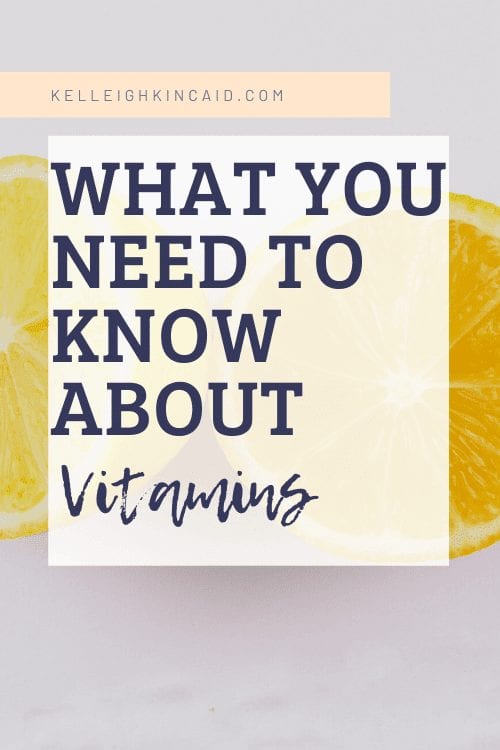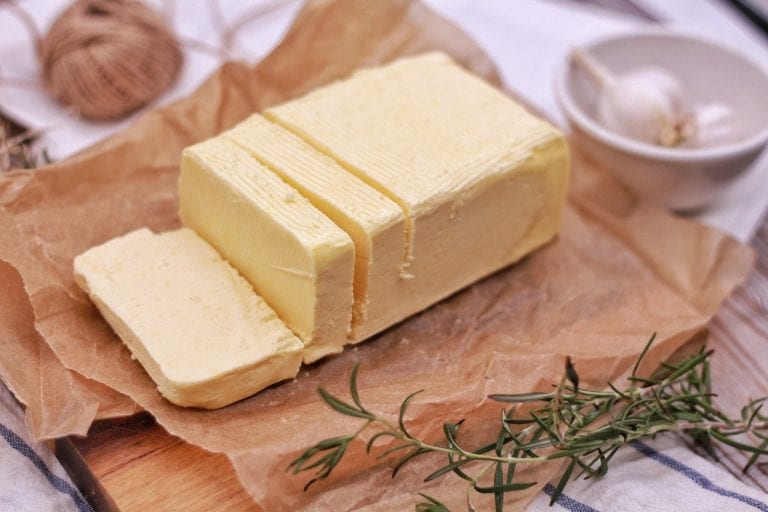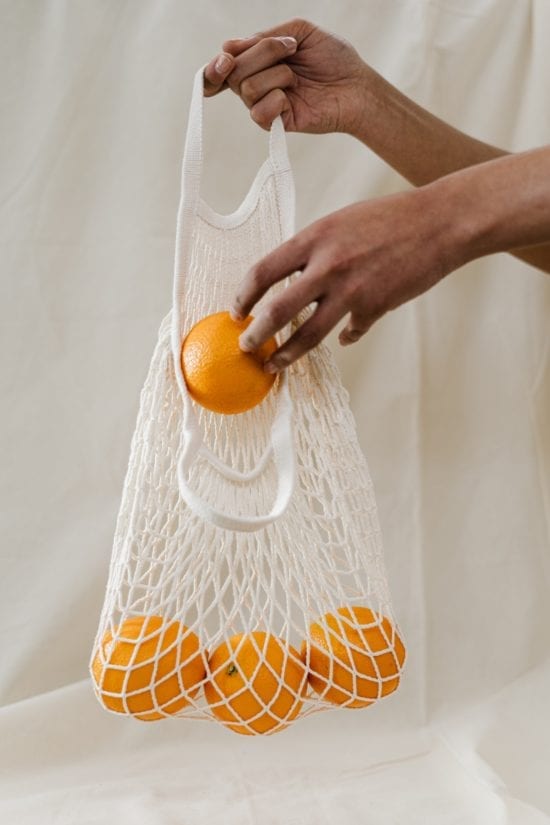What You Need To Know About Vitamins: Essential Nutrients

WHAT YOU NEED TO KNOW ABOUT VITAMINS
This post is meant to be a brief overview of the vitamins we need to feel awesome. But if I had to sum up the point in one sentence it would be: just eat real food.
When you eat a real, whole, nutrient-dense food, you don’t have to micromanage your vitamins and minerals as much. They are found in balance in whole foods.
These nutrients all work together in the body and need each other for activation. Vitamins and minerals have a totally interconnected relationship with each other. Mega dosing on one can cause a deficiency in another. It’s all about balance.
We can use foods therapeutically to increase a certain nutrient (for example eating more raw bell pepper for vitamin C) but that won’t help much if the rest of your diet is crap and the cofactors aren’t there to properly use the vitamins in food.
It’s not so much what you ingest, but more about what you ingest and absorb!
Though I do use supplements, they are not a replacement for trying to get the most bioavailable forms of vitamins in your food. That is the first priority.
In general things like poor digestion, a processed diet, smoking, excessive alcohol use, and chronic stress can drive low absorption of vitamins from our diet. So you could be eating a great diet, but not able to absorb nutrients as well or just plain need more of them.
With everything in the body, it really starts with having good digestion. Having stellar digestion is the key to absorbing nutrients from your food. Read more about how to optimize your digestion here.
If you want a little more in depth on what vitamins are important and why, read on my friend.
Warning: there is some nerdy nutrition packed content below!

VITAMINS 101
We get nutrients two ways in the body: from macro nutrients – like fats, proteins, and carbohydrates, and from micronutrients – like vitamins and minerals.
Most vitamins we have to get from food with the exception of some small amounts of B vitamins and vitamin K2 made by our gut bacteria.
Vitamins mainly act as coenzymes and cofactors for energy production and other biochemical processes in the body. They help us take macronutrients and turn them into fuel for our body! Many minerals rely on vitamins to help in metabolic conversions.
There are two types of vitamins: fat soluble – vitamins ADEK, and water soluble – B vitamins and vitamin C.
Fat soluble vitamins get stored in cells so you have to be a little more cautious with dosing. Fat soluble vitamins are generally more stable to heat, whereas water soluble vitamins degrade quickly with heat, light, and air.
This means that cooking can reduce water soluble vitamins by a lot. Also the more fresh the food is, the more nutrient-density (aka more vitamins) it has.
A note on RDA’s (Recommended Daily Allowance) for vitamins: This is the amount just to avoid any acute deficiency disease. This is not the amount for optimal human function.

VITAMIN A
WHAT VITAMIN A DOES IN YOUR BODY
Vitamin A comes in both bio-active (preformed, or retinol) from animal products and provitamin A – carotenoids that can be turned into retinol in the body.
These orange and yellow vegetables contain high levels of provitamin A but the conversion rate can be compromised – especially if you have low thyroid function, diabetes, or a lot of PUFA’s (polyunsaturated fatty acids) in the diet. Read more about Polyunsaturated fats here.
Beta-carotene is not the same thing as vitamin A! Conversion is efficient (estimates that only 3% of beta-carotene converts into preformed vitamin A in healthy adults!) and also it takes six units of beta-carotene to make one unit of vitamin A. Preformed vitamin A from grass-fed animal sources is essential in a healthy diet.
Absorption of Vitamin A is reduced with alcohol use, other fat soluble vitamin deficiency, steroid medication, excessive iron intake, and over exercising.
We need more vitamin A during times of stress and illness.
Vitamin A helps with immunity, vision (think retina), growth and tissue repair, skin health, and antioxidant protection.
WHAT A DEFICIENCY OF VITAMIN A MIGHT LOOK LIKE
Visual changes like night blindness, dry eyes, skin dryness (especially dry bumpy skin on the back of arms), increased infections, dandruff, abnormal menstruation, decreased appetite, loss of smell, gum infections, ear problems, acne, kidney stone formation.
Vitamin A deficiency is linked with lowered immunity and autoimmune conditions.
As with many cases, the toxicity symptoms look similar to the deficiency symptoms: menstrual problems, dry skin, irritability, dizziness, headaches, nausea, abdominal pain, hair loss.
Deficiency in vitamin A can result in vitamin D toxicity (as much lower than normal levels). Yet too much vitamin A can result in vitamin D deficiency. Again, balance is key.
BEST SOURCES OF VITAMIN A
Retinol: liver (I use this decussated grass-fed beef liver brand), fish liver oil, egg yolks, and dairy products like butter or ghee (just make sure it’s grass-fed!).
Carotenoids: Brightly colored vegetables (like carrots, pumpkin, sweet potato, squashes, red cabbage) and leafy and green vegetables (like asparagus, broccoli, brussel sprouts, kale, lettuces, spinach, seaweed).
I do not recommend taking a vitamin A supplement by itself. I like to use real food forms, like this one, and use Vitamin D & K with vitamin A to mitigate any toxicity.

VITAMIN D
WHAT VITAMIN D DOES IN YOUR BODY
Vitamin D is a superstar in the body.
It’s actually more like a hormone than a vitamin and the only ‘vitamin’ that our body can manufacture with the help of sunlight, our skin, liver, kidneys and bloodstream. We actually need cholesterol to produce vitamin D, just another reason not to be afraid of dietary fats and cholesterol (LINK).
Deficiency is super common, especially in the northern hemisphere. Winter, clouds, smog, aging, and darkly pigmented skin all reduce the body’s ability to make vitamin D from sunshine. You actually need quite a bit of sun to make sufficient quantities of D.
Think you can get vitamin D from tanning beds? Sadly, no. Tanning beds are mostly UVA light and vitamin D is activated with UVB light.
Supplementing with this is tricky. I never recommend vitamin D alone. Taken in combination with vitamin A and K, it will mitigate toxicity.
We need vitamin D to absorb and utilize calcium in the body. (Read more about the vitamin D and calcium connection here.) Taking calcium, magnesium, and vitamin D all together is the best combo for bone health (think sardine salad over leafy greens).
We need vitamin D for immunity, nervous system health, gum health, bone health, and literally so many other things in the body.
Every cell in your body needs vitamin D to function properly. We may not think about our cellular health often but we take care of our cells, that is when we feel frickin awesome, have energy, and stay young and fit.
Vitamin D can reduce inflammation, reduce the risk of most cancers, support good mood and brain health. I could go on and on. Vitamin D is one the most important vitamins to be optimized because it does so much. It is one of the most potent antioxidants in the body.
Like I said – superstar.
WHAT VITAMIN D DEFICIENCY MIGHT LOOK LIKE
Deficiency is common but symptoms are vague and associated with many other conditions. Signs may include fatigue, muscle weakness, bone pain, impaired wound healing, hair loss, and depression.
Vitamin D can protect against autoimmune issues like multiple sclerosis and rheumatoid arthritis, Parkinson’s disease, cardiovascular disease, diabetes, weak bones, infections, low immunity, and most cancers like breast, colon, and prostate.
Ever had sun poisoning? Most likely vitamin D toxicity. Toxicity looks like nausea, diarrhea, excessive thirst, and headaches.
BEST SOURCES OF VITAMIN D
Sunlight: in the summer, as little clothes as possible between the hours of 10am-3pm. Do not shower right away after sun exposure – it can take up to 48 hours for your body to absorb the vitamin D precursor on your skin (it is not yet a bio-active form of D3 yet).
Sunscreens are a hot topic and I don’t use them – especially the chemically laden ones that bake those chemicals into your body through your skin. SPF will prevent you from making vitamin D from sunshine. Just be smart about sun exposure.
Vitamin D is most bio-available in the form of animal products – cod liver oil, beef liver, fatty fish, egg yolks, butter. Plant derived vitamin D (d2) is not as easily converted to D3 (bioavailable form) and is not found in sufficient quantities. Also note that most cod liver oil’s contain way more vitamin A than D. It is important to read the labels.
I recommend supplementing with vitamin D if you live in the northern hemisphere, it’s wintertime, you don’t get in the sun often, or you are over the age of 50. Again, we want it with vitamin A and K. Getting a yearly vitamin D blood test is important. An optimal (functional medicine range) would be between 60 – 80 ng/mL.
If you have a gallbladder removed or poor fat absorption, you probably have higher needs for vitamin D.

VITAMIN E
WHAT VITAMIN E DOES IN YOUR BODY
Vitamin E is a powerful antioxidant – which we all need more of in our industrialized, modern world. We are exposed to more pollution, chemicals, and environmental stressors than ever before.
Oxidation in the body also comes from excess PUFA’s and oxidized fats (like anything fried). This creates free radicals in the body and leads to inflammation. This is the start of many chronic diseases – heart disease, hypertension, arthritis, and cancer.
Vitamin E is especially important for heart and vascular health by protecting the blood vessels and the heart from free radical damage. It has been shown to reduce risk of cardiovascular disease and atherosclerosis by reducing platelet aggregation. It is also super helpful before and after surgery to reduce free radical production.
It can support women with menopausal symptoms and menstrual cramps.
Commonly used externally for tissue repair, ulcers, burns, dry skin, and varicose veins.
This antioxidant works best with other antioxidants like vitamin C, beta-carotene, glutathione, CoQ10, and selenium.
WHAT A DEFICIENCY OF VITAMIN E MIGHT LOOK LIKE
Symptoms of vitamin E deficiency are hard to identify without a blood test. Low levels of vitamin E have been associated with acne, anemia, infections, gum disease, gallstones, and some cancers.
Deficiency is more common for those with GI issues, poor fat absorption, or lack of pancreatic enzymes.
The body needs more vitamin E with high levels of estrogen (so those on estrogen therapy), lots of PUFA’s, processed food in the diet, and chlorine (think swimming pools and your shower). I use a shower filter to remove chlorine.
Vitamin E should not be taken with iron as iron can decrease absorption of vitamin E in the gut. The mineral selenium will increase absorption of vitamin E from foods.
Toxicity is less common with vitamin E as it can be eliminated through urine and feces and excess can be cleared within a few days.
But as with all vitamins, we want the ‘Goldilocks dose’ as too high of vitamin E can actually inhibit many of the good things it does in the body. You especially want to avoid high doses of vitamin E if you have high blood pressure.
BEST SOURCES OF VITAMIN E
Though vitamin E is found in whole food grain sources, bleaching, milling, and refining of flours remove most of the vitamin. Plus vitamin E is used up much quicker when exposed to PUFA’s (so that means most processed foods).
This is the one fat soluble vitamin that is better found in plants than animal sources. The best source of vitamin E is whole food forms of grains, seeds, and nuts.
Just beware that most nuts and seeds have high levels of polyunsaturated omega-6 fats. These aren’t bad per-say, but we want them in equal portion to omega-3 fats. So no nut binging!
My picks for getting healthy forms of vitamin E in your diet is soaked and sprouted almonds, sunflower seeds, spinach, and avocado.
I do not recommend supplementing with vitamin E.

VITAMIN K
WHAT VITAMIN K DOES IN YOUR BODY
Vitamin K just doesn’t get enough attention. You get vitamin K1 from foods like leafy greens and vitamin K2 is produced by gut bacteria and found in fermented foods and high-fat dairy products (like grass-fed butter!) .
K1 and K2 act differently in the body. Vitamin K1 helps with proper blood clotting. Vitamin K2 is involved in calcium metabolism – it helps remove excess calcium from the arteries. It is very important for heart and bone health and the prevention of osteoporosis and heart disease. Vitamin K2 helps control inflammation in the body.
We can increase our body’s ability to produce K2 by adding probiotic food to our diet. Antibiotics will reduce K2 made in the body.
WHAT VITAMIN K DEFICIENCY MIGHT LOOK LIKE
Deficiency is uncommon but more likely with GI issues, poor fat absorption, poor diet, or celiac disease. High doses of vitamin E supplement can cause vitamin K deficiency.
Severe deficiency would look like a blood clotting problem – easy bruising, or even internal hemorrhaging. Deficiency may also play into insulin resistance, low testosterone in men, and high androgens in women.
BEST SOURCES OF VITAMIN K
Both plant and animal sources provide good quantity of vitamin K – leafy greens, kelp, blackstrap molasses for Vitamin K1.
Liver, high fat dairy products (like grass-fed butter and ghee), egg yolks, and goose liver, and natto for sources of vitamin K2.
WATER-SOLUBLE VITAMINS: B VITAMINS & VITAMIN C
Water soluble vitamins get eliminated quickly and need daily intake in the body.
Excess fluid loss (sweating and use of diuretics), and boiling water soluble rich foods can lead to a deficiency.
B VITAMINS
WHAT B VITAMINS DO IN YOUR BODY
You literally need B vitamins for everything! They are involved in so many biochemical processes in the body and our needs for them are high. We need B vitamins for energy metabolism and methylation. Energy metabolism helps convert our macronutrients into fuel. Methylation helps the body detoxify.
Energy metabolism directly supports the antioxidant system in the body as well as methylation pathways.
There is a lot of vitamins in the B family:
B1: Thiamin – energy metabolism
B2: Riboflavin – energy metabolism
B3: Niacin – energy metabolism
B5: Panthothenic acid – energy metabolism
B6: Pyridoxine – energy metabolism
B7: Biotin – energy metabolism
B12: Cobalamin – methylation
Choline – methylation
B9: Folic acid – methylation
Inositol – methylation
PABA
I could write a whole book on what each of these B vitamins does but I just want to give you an overview here.
B vitamins are often found together in food, no B vitamin is found in isolation. They need their other B vitamins friends to work!
We need them for our nervous system, so these are especially important for stress, anxiety, fatigue, or cases of adrenal fatigue. Also used for skin problems like cracked corners of the lips (B2 deficiency), dry patchy skin, or rashes.
WHAT B VITAMIN DEFICIENCY MIGHT LOOK LIKE
We need an intake of B vitamins daily and can become deficient easily – especially while fasting, consuming a lot of sugar, coffee, alcohol, or processed foods.
Antibiotics, and other drugs that disrupt our microbiome lower our bodies ability to make our own B vitamins. Infections, stress, low stomach acid, pregnancy, and high carb diets increase the need for B vitamins.
Low absorption (GI issues like low stomach acid, or gastritis) is a major cause of B vitamin deficiency.
A deficiency in one B vitamin can cause a deficiency in another. Also an excess in one B vitamin can cause a deficiency in another. Like I said, they all need each other in balance.
Deficiency symptoms can be very similar and overlap with other deficiency conditions.
Deficiency will show signs in the nervous system, skin, hair, nails, and GI tract. It may look like fatigue, lethargy, irritability, anxiety, insomnia or disturbed sleep, depression, cracks at the corners of the mouth, dermatitis, hair loss, conjunctivitis, or loss of appetite.
When we are deficient in B vitamins it can also lead to decreased immunity, lowered estrogen metabolism, anemia, constipation, acne, skin problems, hair loss, and early greying of hair.
Also there are several forms of B vitamins and our bodies need the active forms. You may have sufficient intake but unable to convert them into active forms.
Toxicity in B vitamins is not an issue with the exceptions of B6 (pyridoxine) and B3 (niacin) – and this is very high therapeutic doses over a long period of time with preexisting conditions.
BEST SOURCES OF B VITAMINS
Nutritional Yeast has the highest content of natural B vitamins (and can be fortified with B12). Yeast is commonly used to make B vitamin supplements. If you have candida issues or are sensitive to yeast, this is important to know.
I use desiccated beef liver for a great source of B vitamins (along with vitamins A and D).
Animal products like beef protein contain high levels of B12 but low in the rest of the family.
I always recommend supplementing with a methylated B-complex product made from whole food form – this is especially important if you have the MTHFR gene mutation. Taking B vitamins individually can deplete the other B vitamins.
The RDA for B vitamins is quite low, so taking a much higher quantity than the RDA is common. The body doesn’t store excess B vitamins so toxicity concerns are low. This also means that you can only absorb enough B vitamins for one day, so daily consumption is necessary.
B12 deserves special comment here. Most vegetarians are deficient in B12 (70%) and almost all vegans (90%). B12 is found almost exclusively in animal products. The amount found in plants (like shiitake, chanterelle, and chlorella) is not enough to be sufficient. This is an essential vitamin and if you are not getting it in the diet, I highly recommend supplementing.

VITAMIN C
WHAT VITAMIN C DOES IN YOUR BODY
We need to get vitamin C from the diet. It is only found in vegetables and fruits but is easily lost in cooking. Though it is found in adrenal glands of animals, which is why hunter gatherer tribes and eskimos would eat the adrenals of animals.
We need vitamin C to produce and maintain collagen in our body, which helps heal wounds, maintain healthy blood vessels, and prevents premature aging.
Vitamin C also helps support the immune system by increasing production of lymphocytes and neutrophils (white blood cell protection). Higher doses can also be helpful in defending against viral and bacterial attack. It may also help reduce histamine production, therefore decrease allergy symptoms.
It is also a powerful antioxidant, which helps protect the body from free radicals.
Our adrenals really need vitamin C (it is the highest concentration of vitamin C in the body), which is why supplementing with a natural food form is an important part of adrenal fatigue recovery. Ascorbic acid doesn’t cut it.
We use vitamin C to make adrenaline, epinephrine, oxytocin, melanin, and tells the thyroid to make more thyroid hormone.
It works in conjunction with copper, iron, and B vitamins (like thiamin, riboflavin, niacin, and pyridoxine).
WHAT VITAMIN C DEFICIENCY MIGHT LOOK LIKE
Vitamin C is used up quicker in the body during times of stress, with adrenal fatigue, excessive alcohol use, and smoking. Aspirin, antibiotics, viruses, fever, pain medications, birth control pills, estrogen therapy, environmental toxins, and heavy metals will reduce absorption of vitamin C in the body.
In deficiency we may also see waking in the middle of the night to go pee, low sex drive, and early greying hair.
BEST SOURCES OF VITAMIN C
Citrus fruits, rose hips, acerola cherry, papayas, strawberries, red and green peppers, broccoli, kale, brussels sprouts, asparagus, and dark leafy greens. Remember, vitamin C is easily lost with cooking so fresh and raw or lightly cooked is best. Boiling is the worst. That is why I recommend raw bell peppers, leafy greens, and citrus as whole food sources.
Vitamin C when taken with iron will increase absorption of iron, but iron will decrease absorption of vitamin C.
Because vitamin C is rapidly used by the body taking a liposomal buffered vitamin C in divided doses throughout the day is helpful. I use 1200 mg per day in divided doses in addition to whole food sources.
FINAL THOUGHTS
Whew! Thats a lot of info. If you’ve stuck with me this far, you get a nerdy nutrition medal!
This is really meant as an overview in case you wanted to dive into understanding the role of vitamins in your body. Of course, this is just the tip of the iceberg but hopefully it empowers you with more understanding of your body.
Lots of people will just start popping vitamin supplements and not fully understand the role they have in the body, the balancing act required, or the bioavailability of whole food source. Food is medicine, for real!
This is part of the Foundations of Awesome Health series.
Want more support balancing vitamins in your body? Noticing signs of deficiency?
Work 1:1 with me so we can dig deep into nutrient deficiencies and help you feel awesome again!
